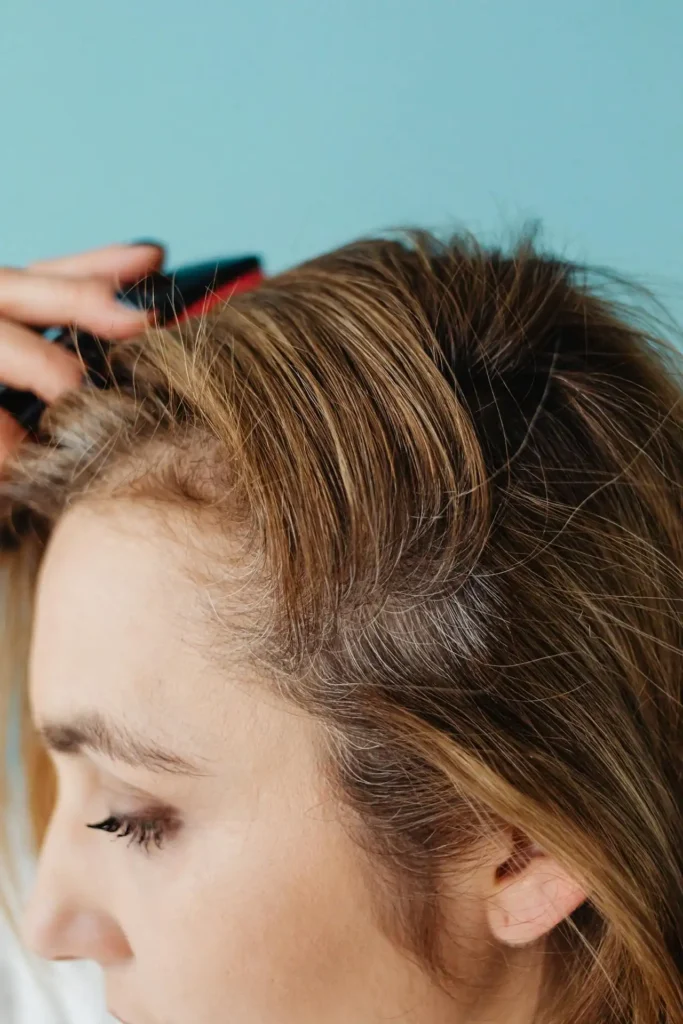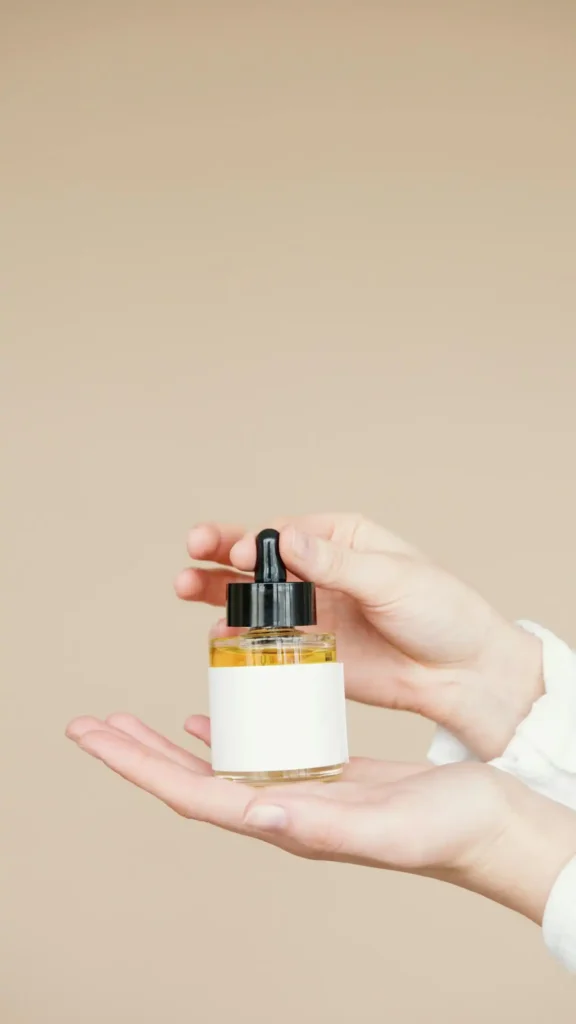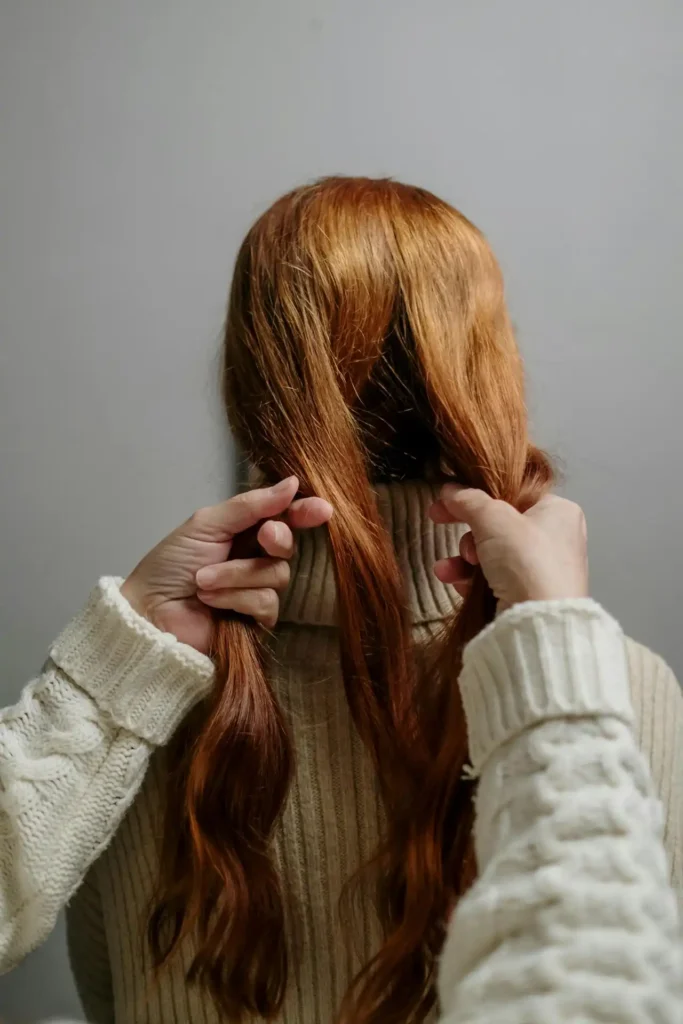How to Grow Your Hair Faster Naturally – 7 Proven Tips
Dreaming of longer, healthier hair? You’re not alone. Many people struggle with slow hair growth and wonder if there’s a natural way to speed up the process.
The good news is that you can boost your hair growth naturally without expensive treatments or harsh chemicals.
Your hair grows about half an inch per month on average, but with the right approach, you can maximize this potential.
These seven proven tips will help you create the perfect environment for faster, stronger hair growth.
Each method focuses on nourishing your hair from the inside out while protecting what you already have.
1. Master the Art of Scalp Massage

Your scalp holds the key to faster hair growth. When you massage your scalp regularly, you increase blood circulation to your hair follicles.
This improved blood flow delivers essential nutrients and oxygen directly to the roots where new hair growth begins.
You don’t need fancy tools or expensive products to get started. Simply use your fingertips to apply gentle pressure in circular motions across your entire scalp.
Spend at least five minutes each day on this simple routine, preferably before bedtime or during your morning routine.
The technique matters more than you might think. Start at your hairline and work your way back, using the pads of your fingers rather than your nails.
Apply moderate pressure – enough to feel the movement but not so much that it causes discomfort.
For even better results, incorporate scalp massage into your hair washing routine. The combination of massage and cleansing creates an ideal environment for growth.
Many people notice their hair feels thicker and looks shinier within just a few weeks of consistent scalp massage.
Research shows that regular scalp massage can increase hair thickness by up to 69% over 24 weeks.
This happens because massage stimulates the cells in your hair follicles, encouraging them to produce stronger, thicker strands.
2. Feed Your Hair From Within
Your hair reflects your overall health, and nutrition plays a crucial role in how fast it grows. What you eat directly impacts the strength, shine, and growth rate of your hair.
Your hair follicles are among the most active cells in your body, which means they need a steady supply of nutrients to function properly.
Protein forms the building blocks of your hair. Include lean meats, fish, eggs, beans, and nuts in your daily meals.
Your hair is made primarily of a protein called keratin, so inadequate protein intake can slow growth and make hair weak and brittle.
Iron-rich foods deserve special attention in your diet. Low iron levels often contribute to hair loss and slow growth.
Spinach, lean red meat, lentils, and tofu provide the iron your hair follicles need to stay healthy and productive.
Biotin and other B vitamins support hair growth at the cellular level. You’ll find these nutrients in eggs, avocados, sweet potatoes, and leafy greens.
Vitamin D also plays a role in hair follicle health, so consider spending time in sunlight or discussing supplements with your healthcare provider.
Omega-3 fatty acids keep your hair shiny and strong while supporting scalp health. Salmon, walnuts, and flaxseeds are excellent sources.
These healthy fats also reduce inflammation that can interfere with hair growth. Citrus fruits, berries, and bell peppers provide plenty of this essential vitamin.
Don’t forget about vitamin C, which helps your body absorb iron and produces collagen for strong hair structure.
3. Trim Regularly to Prevent Damage
This might seem counterintuitive, but regular trims actually promote faster hair growth.
When you leave split ends untreated, the damage travels up the hair shaft, causing breakage that makes your hair appear to grow slowly or not at all.
Schedule a trim every 6-8 weeks, removing just a quarter to half an inch. This frequency prevents split ends from forming while maintaining your hair’s length goals.
You’re not cutting off significant length – you’re protecting the hair you already have. Split ends occur when the protective cuticle layer of your hair becomes damaged.
Once this happens, the inner layers become exposed and vulnerable to further damage. Regular trims remove these damaged ends before they can cause more problems.
Pay attention to the signs that you need a trim. If your hair feels rough, tangles easily, or looks frayed at the ends, it’s time for a cut.
Waiting too long between trims means you’ll eventually need to cut off more length to remove all the damage.
Professional stylists can assess your hair’s condition and recommend the best trimming schedule for your hair type.
They can also suggest protective styles and techniques to minimize damage between appointments.
4. Harness the Power of Natural Oils

Natural oils provide deep nourishment that commercial products often can’t match. Different oils offer different benefits, so you can choose based on your specific hair needs.
These oils penetrate the hair shaft and scalp, delivering nutrients directly where they’re needed most.
Coconut oil stands out as one of the most effective oils for hair growth. Its molecular structure allows it to penetrate deeply into the hair shaft, providing moisture and protein.
Massage warm coconut oil into your scalp and hair, leave it for at least 30 minutes, then wash with a gentle shampoo.
Castor oil has gained popularity for its potential hair growth benefits. Rich in ricin oleic acid, this thick oil may help improve circulation to the scalp.
Apply it to your scalp 2-3 times per week, focusing on areas where you want to encourage growth.
Rosemary oil offers promising results for hair growth. Studies suggest it may be as effective as minoxidil for promoting hair growth.
Mix a few drops with a carrier oil like jojoba or coconut oil before applying to avoid skin irritation.
Argon oil works wonderfully for adding shine and protecting hair from damage. Apply oils to slightly damp hair for better absorption.
This lightweight oil won’t weigh your hair down while providing essential fatty acids and vitamin E. Use it as a leave-in treatment on damp hair.
The moisture helps the oil penetrate deeper into the hair cuticle. Start with small amounts – you can always add more, but too much oil can leave your hair looking greasy.
5. Minimize Heat and Chemical Damage
Heat styling tools and harsh chemicals can significantly slow hair growth by causing damage faster than your hair can repair itself.
Every time you use high heat or apply chemical treatments, you weaken your hair’s structure and make it more prone to breakage.
Limit heat styling to once or twice per week maximum. When you do use heat tools, always apply a heat protectant product first.
Set your tools to the lowest effective temperature – you don’t need maximum heat to achieve great results.
Air drying becomes your hair’s best friend when you’re focused on growth. If you must use a blow dryer, use the cool setting or keep it on low heat.
Consider investing in a microfiber towel or cotton t-shirt for gentler drying that reduces friction and frizz.
Chemical treatments like bleaching, perming, and relaxing cause significant stress to your hair.
If you can’t avoid these treatments entirely, space them out as much as possible and invest in intensive conditioning treatments to help repair damage.
Even everyday products can contain harsh ingredients. Consider temporary color options or techniques like balayage that require less frequent touch-ups.
Sulfates in shampoos strip natural oils, while alcohols in styling products can cause dryness. Look for gentler, sulfate-free formulations that clean without over-drying.
Color-treated hair needs extra care to maintain strength while growing. Use color-safe products and deep condition regularly.
6. Prioritize Sleep and Stress Management
Your hair grows most actively while you sleep, making quality rest essential for optimal growth.
During sleep, your body repairs and regenerates cells, including those in your hair follicles.
Aim for 7-9 hours of quality sleep each night to give your hair the recovery time it needs. Stress directly impacts hair growth through hormonal changes.
High cortisol levels can push hair follicles into a resting phase, slowing growth and sometimes causing hair loss.
Managing stress isn’t just good for your overall health – it’s crucial for healthy hair growth.
Create a relaxing bedtime routine that signals to your body it’s time to rest. This might include dimming lights, avoiding screens, or practicing gentle stretches.
Consistent sleep schedules help regulate your body’s natural rhythms, including those that control hair growth.
Consider stress-reduction techniques like meditation, yoga, or regular exercise.
These activities help lower cortisol levels and improve circulation, both beneficial for hair health.
Even ten minutes of daily meditation can make a noticeable difference in your stress levels.
Physical activity deserves special mention because it improves circulation throughout your body, including to your scalp.
You don’t need intense workouts – regular walks, swimming, or yoga can provide these benefits while helping you manage stress.
Sleep on silk or satin pillowcases to reduce friction that can cause hair breakage while you sleep.
These smooth fabrics allow your hair to glide rather than catch and tangle during the night.
7. Stay Hydrated and Protect Your Hair

Hydration affects every cell in your body, including those responsible for hair growth. Aim for at least 8 glasses of water daily, more if you’re active or live in a dry climate.
When you’re dehydrated, your body prioritizes vital organs over hair growth, which can slow the process significantly.
Your hair shaft consists of about 25% water, so adequate hydration keeps it flexible and less prone to breakage.
Dehydrated hair becomes brittle and breaks easily, making it seem like growth has stalled when really you’re losing length to damage.
Environmental factors can sabotage your hair growth efforts. Sun exposure, pollution, and harsh weather all contribute to hair damage.
Protect your hair with hats, scarves, or UV-protective hair products when spending time outdoors.
Swimming pools pose a particular challenge because chlorine strips natural oils and can cause significant damage.
Wet your hair with clean water before swimming and apply a leave-in conditioner for protection. Always rinse thoroughly after swimming and deep condition regularly.
Indoor heating and air conditioning create dry environments that can dehydrate your hair.
Use a humidifier in your bedroom, especially during winter months. This adds moisture to the air and helps prevent your hair from becoming overly dry.
Tight hairstyles put constant tension on your hair follicles, which can slow growth and even cause hair loss over time.
Vary your hairstyles and give your hair breaks from tight ponytails, braids, or buns. When you do wear these styles, make sure they’re not pulling uncomfortably at your scalp.
Conclusion
Growing your hair faster naturally requires patience and consistency with these proven methods.
Combine multiple approaches for the best results, and remember that healthy hair growth takes time to show visible results.







